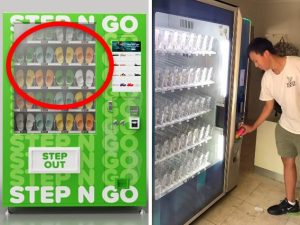9 tips for setting up a retail business

Getting the location right is just one of the key challenges when opening a new retail business.
Finding the right premises, negotiating a lease and having a sound business plan are also vital to ensuring success in a tough retail environment.
We asked Australian Retailers Association Executive Director Russell Zimmerman for his top tips for getting it right.
1) Ensure the location is suitable for the type of business you’re opening. The old adage of location, location, location still is very relevant. If you’re starting an online business it’s imperative you are being seen by potential customers. Search engine optimisation is one key element, but ever so important is your social media presence.
2) A good business plan is always a must – particularly if you’re establishing a new business. Ensure that you’ve got a really good, detailed business plan.
3) Ensure that you can get the supply of stock at the right time (i.e don’t try to order summer stock in late December and January or Winter stock in July/August)
4) Engage a lease negotiator to negotiate the lease for you. Although there is a cost involved, it can save you thousands of dollars in the long run.
5) If you’re reviewing an existing lease, ensure you start this process at least 18 months before the lease expires.
6) If establishing a new business, ensure that you can get sufficient finance from your banking institution. It’s worth noting that in many instances, the first 12 to 18 months of starting a new business may see the retailer make very little to no profit.
7) When reviewing a lease, grab yourself three highlighters, the colour doesn’t matter too much, but I like to use green, pink and yellow. With the green highlighter, highlight all of the things you believe are good and supportive of your business. With the pink highlighter, highlight all of those points that you don’t understand and require clarification or answers on. With the final highlighter (yellow), highlight all of the things that you’d like to change in the lease. It’s a tenants’ market at present, so don’t take the first offer. Be prepared to negotiate and negotiate it down.
8) Research all you can from those running businesses within the same category. Also talk to retailers in the surrounding area. Ask them about challenges, passing traffic, successes etc. This enables you to gain localised knowledge which could prove invaluable to you and your business.
9) If you’re going to operate a middle to upper-market business, take a look around the surrounding area and ensure it is conducive to your business. For instance, what are the people wearing (i.e. drawstring trousers and joggers or trousers and a belt?), what types of residential properties are nearby (i.e. single-car garage, units vs double-car garages and large houses). Doing this enables you to get an idea of your future clientele and understand what market you’re looking at entering.







